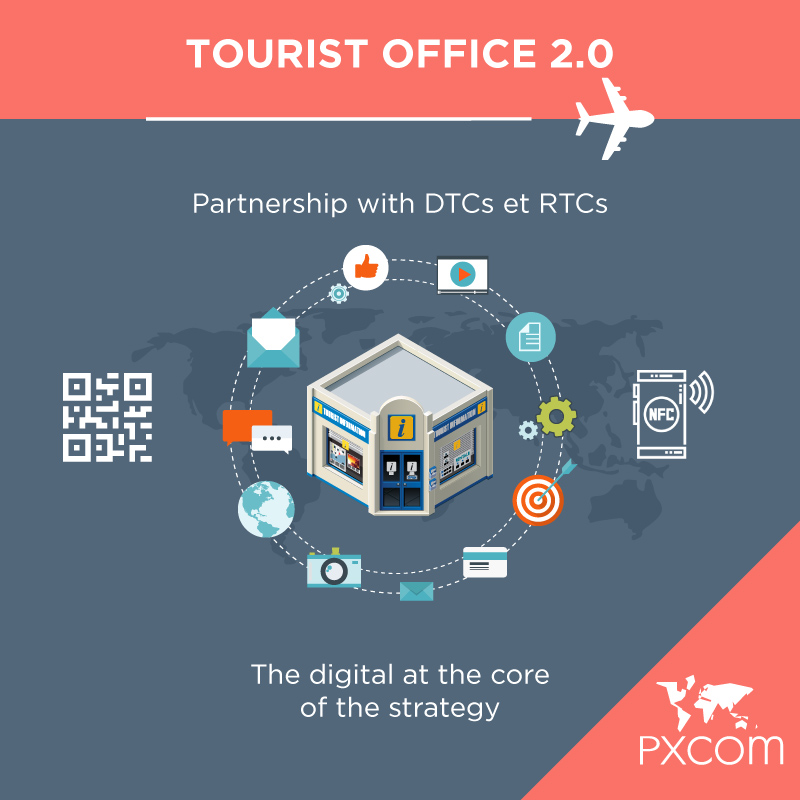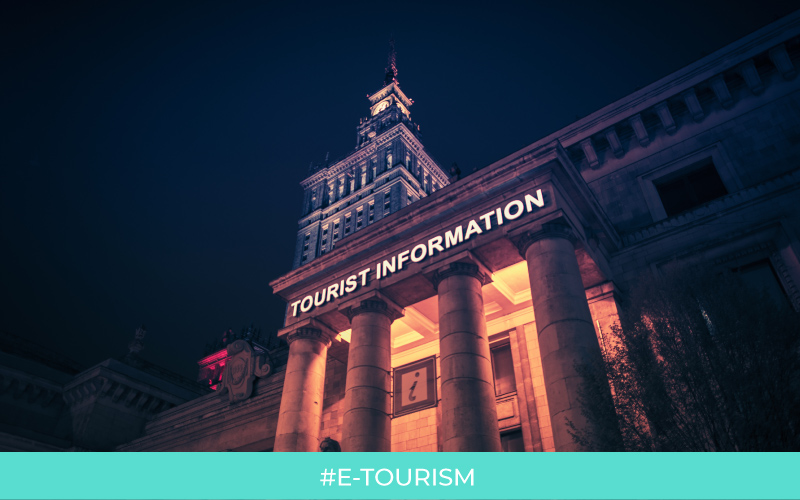All the professionals of the tourism, transport, hotel and museum industries are now impacted by the digital. And so do every steps of the travel, from the destination choice to the souvenirs sharing.
Tourist offices facing real and virtual, connected, mobile and geolocated visitors, can’t avoid this revolution. The latter which doesn’t only change the way they welcome and communicate but also open new great opportunities that bring the territories to life.
More channels for the tourist offices
Small tourist offices in front of the city hall are over! Today, all have a website allowing visitors to schedule their journey in their destination. In some countries, there are national portals that make an inventory of all the countries’ tourist offices. These portals pool tools and digital apps between offices, in order to meet the visitors who prepare their journey needs but also the internal offices’ customers and the collaborators’ ones.

Digital communication: more collaboration managed by the offices
Tourist offices now widely use social media as they understood they are no longer the only one communicating on their territory. Indeed, travelers, inhabitants and partners also strategically contribute to this communication, by posting and sharing their souvenirs. The offices’ challenge is to move from holding the territorial communication to managing it, to insure its global marketing consistency. How? By offering convivial posting spaces on their websites or pages, open to the internet users.
Digital animation: to accompany and promote the local players
This manager mission now includes the digital accompany of the local players: shopkeepers, producers, hoteliers, restaurant owners… Of course, as the tourist offices are undergoing budget cuts, it is high time for them to partner with DTCs (departmental tourism committees) or RTCs (regional tourism committees).
SNUT: the self-diagnosis tool for offices
According to their workforce or budget, tourist offices are not equal faced with the digital. Now, in France, a tool allows them to self-diagnose in order to identify what has been done and what has to be done precisely. It has been developed by MONA (New Aquitania Tourist Offices Mission) and provided nationally since 2014, this online tool called SNUT is also a great illustration of the sharing the digital leads to on all levels.
Boost your company’s visibility with inflight promotion!






